The History and Origins of Mindfulness – PositivePsychology.com
 Here at PositivePsychology.com, we have been discussing several different aspects of mindfulness.
Here at PositivePsychology.com, we have been discussing several different aspects of mindfulness.
We explored various ways to learn about mindfulness, practice it, and even study the art of teaching mindfulness to others.
But where did mindfulness come from? And why have so many people in the West recently become so interested in it?
There is no easy answer to this question, but one solution is to trace the lineage of mindfulness from early Eastern religions to its modern, secular presence in Western science.
This article will cover the history of mindfulness; its roots in Hinduism and Buddhism, how it relates to yoga, and how it came to be popular in the Western world. Finally, we will discuss the most relevant aspect of mindfulness for our purposes—how it fits into the field of positive psychology.
Before you read on, we thought you might like to download our three Mindfulness Exercises for free. These science-based, comprehensive exercises will not only help you cultivate a sense of inner peace throughout your daily life but will also give you the tools to enhance the mindfulness of your clients, students, or employees.
This Article Contains:
The History of Mindfulness
Mindfulness is a practice involved in various religious and secular traditions—from Hinduism and Buddhism to yoga and, more recently, non-religious meditation. People have been practicing mindfulness for thousands of years, whether on its own or as part of a larger tradition.
In general, mindfulness was popularized in the East by religious and spiritual institutions, while in the West its popularity can be traced to particular people and secular institutions. Of course, even the secular tradition of mindfulness in the West owes its roots to Eastern religions and traditions.
It is important to include that some commentators argue that the history of mindfulness should not be reduced to Buddhism and Hinduism, as mindfulness also has roots in Judaism, Christianity, and Islam
(Trousselard et al., 2014).
That said, most modern Western practitioners and teachers of mindfulness learned about mindfulness in the Buddhist and Hindu tradition, so this article will focus on mindfulness from a Buddhist and Hindu perspective.
This should not be taken as a denial of mindfulness’ roots in the other religions, and interested readers are encouraged to seek out information about mindfulness as it pertains to these other religions. One possible starting point comes from Leisa Aitken, a clinical psychologist and practicing Christian—though this is just one of many options.
A Brief History of Hinduism

This is because it initially arose as a synthesis of many religious traditions around the historical region that now makes up India.
In other words, Hinduism has no single founder and no concrete starting point.
In fact, the religious tradition was not even called Hinduism or considered a singular entity until British writers started calling Vedic traditions “Hinduism” in the 1800s.
The earliest traditions, which have since been incorporated into Hinduism, arose more than 4,000 years ago in the Indus Valley— now Pakistan.
These religious traditions continued to develop in Vedic writings 2,500-3,500 years ago. These writings included rituals and the worship of the gods common to modern-day Hinduism.
About 1,500-2,500 years ago, additional texts were composed which are involved in present-day Hinduism, including texts introducing the concepts of dharma and temple worship.
A few hundred years ago, Hinduism experienced some competition in India with the rise of Islam, but 19th-century reformers revitalized Hinduism and helped tie it to the national identity of India.
This proved to be successful because middle-class Indians started identifying with Hinduism around the mid-19th century (Hatcher, 2007). This connection was then solidified about a hundred years later with the Indian independence movement.
Mindfulness has been intertwined with Hinduism for millennia. From the Bhagavad Gita’s discussions of yoga to Vedic meditation, the history of Hinduism reads in part like a history of mindfulness. Of course, it is only a partial history—another crucial player in the history of mindfulness is Buddhism and it should be noted that even Buddhism owes a great debt to Hinduism.
A Short History of Buddhism
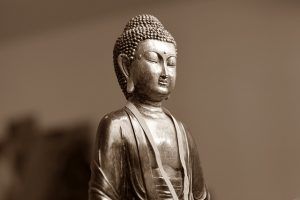
Buddhism was founded around 400-500 B.C.E. by Siddhartha Gautama, who became referred to as the Buddha.
Gautama is thought to have been born and raised around modern-day India and Nepal. Based on where and when Gautama was raised, it is thought that Hinduism informed his upbringing.
Buddhism and Hinduism share many commonalities—they both arose in the same region and are greatly concerned with the concept of dharma. A concept that is very difficult to define or translate, but includes a way of life that is in harmony with the natural order of the universe.
Despite the shared presence of dharma in both of these philosophies/religions, Buddhism is not a subsect of Hinduism because Buddhism does not concern itself with the sacred writings of the Veda (Hacker & Davis, Jr., 2006).
In general, Buddhism is a religion (blurred with philosophy, like many religions) that aims to show its followers the path to enlightenment. Since the Buddha’s lifetime, it has split into several different traditions—including Theravada Buddhism and Zen Buddhism.
Today, Buddhism is most often thought of by non-practitioners in the terms of Tibetan Buddhism and the Dalai Lama, an individual who is thought to be an enlightened teacher of Tibetan Buddhism.
Mindfulness may be even more involved in Buddhism than it is in Hinduism, as mindfulness (Sati) is considered to be the first step towards enlightenment. In fact, some sources even consider the English word “mindfulness” to be a simple translation of the Buddhist concept of Sati.
The fact that mindfulness is such a crucial aspect of Buddhism, combined with the fact that many Western influences in mindfulness studied under Buddhist teachers, shows that Western mindfulness is largely indebted to Buddhism.
How Mindfulness Relates to Yoga
There is a lot of overlap between mindfulness and yoga, both historically and presently. Many yoga practices incorporate mindfulness and some mindfulness meditation practices, such as the body scan, are very similar to yoga as they both involve awareness of one’s body.
One study examined this idea by measuring mindfulness in people who practice yoga (Gaiswinkler & Unterrainer, 2016).
The researchers found that people who practice yoga regularly had higher levels of mindfulness than people who were only slightly involved with yoga or who were not involved in yoga practice.
This indicates that yoga is positively correlated with levels of mindfulness and that some forms of yoga and some forms of mindfulness are striving for the same goals.
Interestingly enough, while the origins of yoga coincide with the origins of Hinduism, so does the recent rise of yoga’s popularity in the West coincide with the rise of mindfulness. This underscores the intertwined nature of Buddhism, Hinduism, mindfulness, and yoga.
But how exactly did all of these ideas, particularly mindfulness, gain so much popularity in the West?
How Mindfulness Moved From East to West
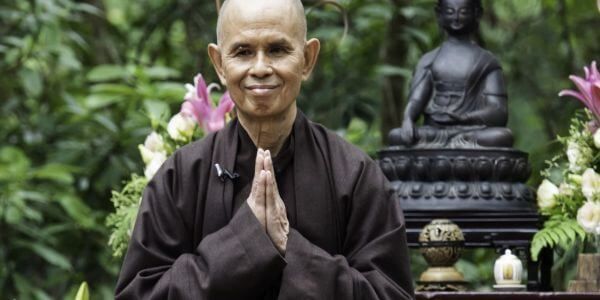
Kabat-Zinn founded the Center for Mindfulness at the University of Massachusetts Medical School and the Oasis Institute for Mindfulness-Based Professional Education and Training.
This is where Kabat-Zinn developed his Mindfulness-Based Stress Reduction (MBSR) program, an eight-week program aimed at reducing stress.
Kabat-Zinn learned about and studied mindfulness under several Buddhist teachers, including Thich Nhat Hanh (an influential and popular figure in Western mindfulness himself). This gave him an Eastern foundation in mindfulness that he integrated with Western science to develop MBSR.
This integration with Western science was a crucial aspect in helping mindfulness gain widespread popularity in the West.
MBSR served as an inspiration for another mindfulness-based therapy program, Mindfulness-Based Cognitive Therapy (MBCT). This therapy is aimed at treating Major Depressive Disorder.
This and other integrations of science and mindfulness helped popularize mindfulness in the West, particularly for audiences accustomed to Western science and unfamiliar with Eastern practices.
One reason that it took a Westerner to adapt and popularize Eastern traditions for a Western audience is the different worldviews prevalent in each hemisphere. A discussion of some of these differences (such as individual versus institutional thinking, and cyclical versus linear thinking) can be found in a TED talk from Devdutt Pattanaik.
Aside from academic science, Jack Kornfield, Sharon Salzberg, and Joseph Goldstein also played a crucial role in bringing mindfulness to the West when they founded the Insight Meditation Society (IMS) in 1975.
The IMS helped introduce mindfulness meditation to the West, and the combination of mindfulness meditation and MBSR helped popularize mindfulness in the West within both clinical and non-clinical populations. Of course, the IMS is just one of many organizations that have helped popularize mindfulness meditation in the West, and in the United States in particular.
Mindfulness’ Role in (Positive) Psychology
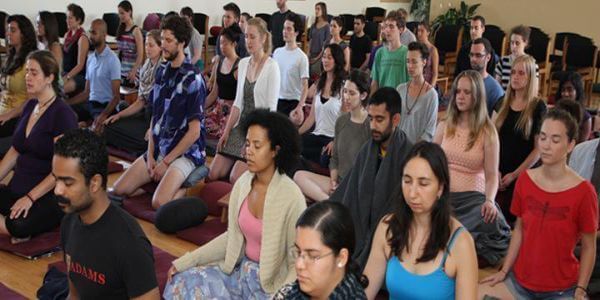
MBSR and MBCT have become accepted tools for psychologists to treat a variety of patients.
Mindfulness meditation has become a useful tool in positive psychology for anyone looking to increase their levels of wellbeing and MBSR has also become popular in non-clinical populations.
Western science has evolved to the point where it can evaluate the effectiveness of practicing mindfulness— making mindfulness an attractive option for those who are skeptical of Eastern traditions.
As mindfulness can be practiced in many different ways for many different uses, it is a perfect tool for any practitioner’s toolbox.
In fact, a group of researchers recently attempted to directly integrate mindfulness with positive psychology in an intervention they called the Positive Mindfulness Program (Ivtzan et al., 2016).
The goal of this study was to combine mindfulness training and positive psychology interventions for the purpose of increasing the wellbeing of participants.
The researchers were successful in doing so—showing that positive psychology and mindfulness can be combined in a research setting.
Mindfulness Practice and Philosophy
So what is mindfulness, and what does the practice of mindfulness look like?
Mindfulness can come in lots of different forms—it could be a yoga practice that involves mindfulness, it might involve setting aside time for mindfulness meditation sessions, or it could involve practicing mindfulness during everyday activities (such as washing the dishes, as Thich Nhat Hanh advocates).
Mindfulness can be practiced individually or as part of a group during a retreat. In fact, mindfulness is so easy you can practice it anywhere!
Mindfulness can be practiced for the sole purpose of becoming more mindful and there are several mindfulness practices and organizations which are aimed at specific groups of people.
One example is the Mindful Warrior Project, which is just one of the groups aimed at helping military veterans use mindfulness to increase their wellbeing post-combat. There are also various groups focused on teaching mindfulness to children, such as the Kids Programme from Youth Mindfulness.
The point is that no matter who you are or what your daily life consists of, there is most likely a mindfulness practice tailored to you. This versatility makes it accessible to all who are willing to learn and put in a little bit of time.
This is a key part of the philosophy of mindfulness, whether it is practiced religiously or in a secular matter. After all, mindfulness practitioners are all striving for the same thing, whether they call it mindful awareness or enlightenment. Very few (if any) mindfulness traditions are based on restricting their teachings to an exclusive group.
A Take-Home Message
Mindfulness is a tradition that has a rich history steeped in religious and, more recently, secular institutions.
The fact that it has found so many devotees among both religious and secular communities shows the universality of its teachings.
Anyone looking to start practicing mindfulness can choose their preferred starting point, whether it be Hindu scripture which is thousands of years old or recent Westernized teachings.
This brief overview of many historical aspects of mindfulness is by no means exhaustive, but we hope it serves as a starting point for readers to learn more about mindfulness and how to practice it.
Knowing the history of mindfulness is not necessary to begin practicing it, but knowing the roots of mindfulness can help you pick the tradition and practice that will be most useful for your life and your needs.
After you have found one that works for you, come back and let us know in the comments below! You might just inspire someone to start a mindfulness practice in their own lives.
We hope you enjoyed reading this article. Don’t forget to download our three Mindfulness Exercises for free.
- Gaiswinkler, L., Unterrainer, H.F. (2016). The relationship between yoga involvement, mindfulness and psychological well-being. Complementary Therapies in Medicine, 26(1), 123-127.
- Hacker, P., Davis, Jr., D.R. (2006). Dharma in Hinduism. Journal of Indian Philosophy, 34(5), 479-496.
- Hatcher, B.A. (2007). Bourgeois Vedanta: The colonial roots of middle-class Hinduism. Journal of the American Academy of Religion, 75(2), 298-323.
- Ivtzan, I., Young, T., Martman, J., Jeffrey, A., Lomas, T., Hart, R., Eiroa-Orosa, F.J. (2016). Integrating Mindfulness into Positive Psychology: a Randomised Controlled Trial of an Online Positive Mindfulness Program. Mindfulness, 7(6), 1396-1407.
- Trousselard, M., Steiler, D., Claverie, D., Canini, F. (2014). The history of Mindfulness put to the test of current scientific data: Unresolved questions. Encephale-Revue de Psychiatrie Clinique Biologique et Therapeutique, 40(6), 474-480.
Let us know your thoughts
Read other articles by their category
- Body & Brain (49)
- Coaching & Application (57)
- Compassion (26)
- Counseling (51)
- Emotional Intelligence (24)
- Gratitude (18)
- Grief & Bereavement (21)
- Happiness & SWB (40)
- Meaning & Values (26)
- Meditation (20)
- Mindfulness (45)
- Motivation & Goals (45)
- Optimism & Mindset (34)
- Positive CBT (28)
- Positive Communication (20)
- Positive Education (47)
- Positive Emotions (32)
- Positive Leadership (18)
- Positive Parenting (4)
- Positive Psychology (33)
- Positive Workplace (37)
- Productivity (16)
- Relationships (46)
- Resilience & Coping (36)
- Self Awareness (21)
- Self Esteem (38)
- Strengths & Virtues (32)
- Stress & Burnout Prevention (34)
- Theory & Books (46)
- Therapy Exercises (37)
- Types of Therapy (64)
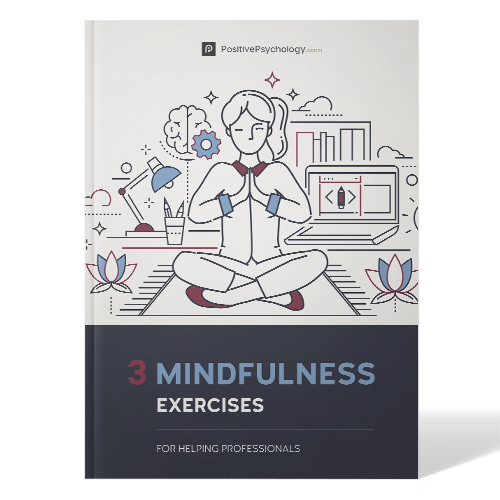
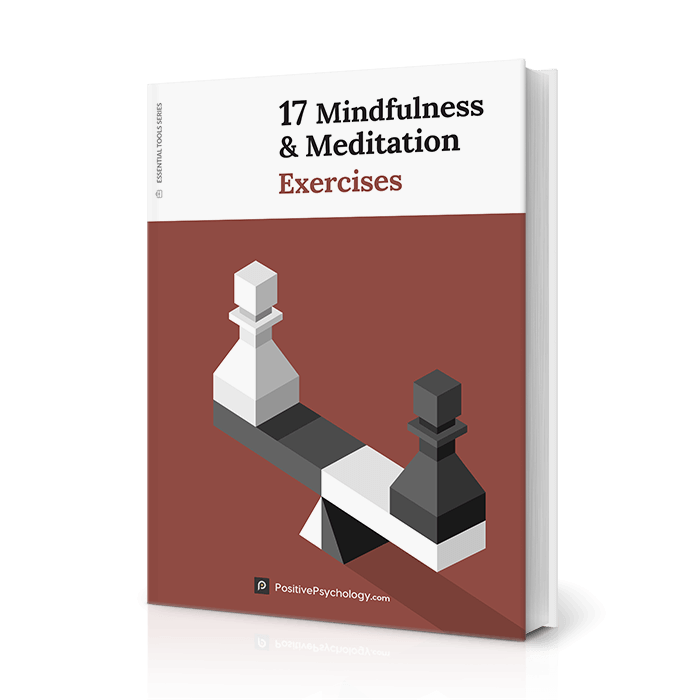



What our readers think
I think Christian readers should understand that mindfullness is not a Christian practice and goes against Christian teachings. As Christians we are instructed to examine all things but not practice other religions or bow to other gods. Hinduism and Buddhism is the worship of other gods, with “mindfulness “ being the way to connect to these other spirits. Not surprisingly, the practitioners of mindfulness are almost universally false Christians or blatantly anti-christian. I accept that other religions exist, but dislike how they look to disguise themselves and deceive. That is however typical of their originator.
Mindless Christians?! That is very sad.
There is evidence that Christian mystics practiced mindfulness/meditation. Check out the book titled “Christian Mystics: 365 Readings and Meditations” written by Mathew Fox.
Dear Cristina,
I hear you. For me, all points of view are valid. I am a practicing Buddhist and for me Buddhism is not a religion; rather a philosophy.
Seeing life as “right and wrong” has limited me and I now notice when this is occurring. Keeping
myself open to the present has brought me much joy and aliveness.
Can you open your heart to hear my experience without judgment?
In peace and harmony, Mariana
Compassionate
I don’t think Jesus would feel the same.
Buddhism doesn’t believe in a creator God. It is wrong to say Buddhism is based on other Gods. So please educate yourself. Buddhism is not based on a belief system. People like you will say “Buddhism is godless. Buddhism is a way of life. Buddhists need to practice kindness, compassion, appreciative joy, and equanimity. My name will indicate that I’m not anglo.
No where in the Bible does it say mindfulness is against the religion. You are choosing to believe. Goes against your faith when it can be a spiritual thing or a psychological one as listed in the article. Researches have proven mindfulness in positive psychology. I am Buddhist and we don’t worship other gods , so please educate yourself . I am not at all anti Christian , I respect all Beliefs . You are very close minded and it’s sad to see such people in this generation like this still.
of lives if we choose to look at it with a non-judgemental attitude. In short, this has nothing to do with Christianity, be flexible. I can tell you about the real worship of other gods if you come to my email.
I am a Buddhist and NO, we don’t have any god, we don’t worship any god.
In fact Buddhism denies the existence of God and spirits.
We only believe in humanity.
Don’t know what kind of Christian you are, it’s ridiculous to speak things that don’t even exist.
I am a big fan of Thich Nhat Thanh. Loved the video of seeing him. Am now goint to practice washing the dishes as he described. I also love the colourful pictures as I find them good for meditating.
As a student of mindfulness I found this article extremely helpful, and I intend to re-read Kabbat- Zinn as a starting point in my efforts to develop a more mindful life. Thank you so much.
Thank you Joaquin for sharing this information. I think you did a great job putting this together for the readers. It’s to the point and clear. If readers want to find deeper info on certain points – there’s plenty of information out there that can further elaborate.
Hi Xo,
Glad you enjoyed the article. Yes, there’s certainly plenty more to read in books and on the web. For more reading, we have a free mindfulness toolkit available for download here which might be of interest to you.
– Nicole | Community Manager
hey great way to be mindfull about all of these things
I am not a graduate or student of any training programme but a student of My Mindfulness Domain. I am 67 years old and my life experience has imposed on me the inevitable unhealthy stress mode and needing to please others scenarios. At this stageI my life l am desperately wanting to take this journey of discovery so by starting from scratch l will become connected and discover what is right for me. Therefore this article is a useful stepping stone in my humble understanding of the origins and expansion of Mindfulness in the West.
I’m a graduate of MBSR Jon Kabat Zinn, Saki Santorelli and Thich Natch Hann were my teacher’s . You’ve downplayed their groundbreaking work in this article and your reason for doing so is not clear. They begain exploring the mind body connection while doing a practicum at a Boston hospital. The Cambridge center for meditation played an important role for expanding their practice. From the stress reduction and relaxation program they began to teach unique populations of people from all walks of life. It’s really impossible to downplay their role in the practice of mindfulness meditation. Without Jon kabat-zinn, Thach Natch Hann, Saki Santorelli and Florence, there wouldn’t be mindfulness anywhere.
jon kabat zinn is a great promoter of mindfulness as he started using it to cure patients with MBSR mindfulness based stress reduction; as they were not improving despite the same illness and medication, at the clinic in massachusetts i believe in the early 70’s